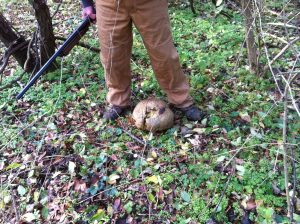It’s more or less what I’ve learned from any Greek story: nature will kill you given the smallest chance. And it’s not an entirely overdramatic conclusion really. We only recreate outdoors now voluntarily, and only because we’re rarely in any serious danger from doing so (except that of our own making), and that’s because we’ve driven to near-extinction any competing apex predator.
But still, nature will kill you.
But nature kills everything. And in few ways do I find this more apparent than the existence of the carnivorous plant. A generally immobile life form, seeking its energy from photosynthesis, it hungers for something more. It hungers for blood. It requires nutrition!
I think everyone’s had a Venus flytrap at some point. And everyone’s had one die. Like goldfish, we all dabble in the hobby, then give up instantly upon failure.
But age has granted me a longer attention span, and greater resources. So when my mother gifted unto me a couple such carnivorous plants, I decided to make a certain effort and keep them alive.


Following my sister’s advice, I planted them in a mix of sand and peat moss. But with nowhere to put them (houseplants don’t do well in our house as it has no south-facing window), I left them under the grow lights.
So far they’ve been doing well, and have slowly produced more deathtraps. A number of fruit flies have fallen victim.

A few observations/points of research: The Nepenthes mirabilis appears to digest its prey with an enzyme fluid, but the Sarracenia purpurea does not–relying instead on bacterial digestion. Also, the mirabilis appears to have a cover to keep out the rain, while purpurea does not. And mirabilis never seems to go dry, while purpurea does. I’m assuming then that purpurea relies on rain water to keep full, so I make a point to fill their leaves on occasion.
I must be doing something right, because they’re still growing and making more traps. Maybe they’ll have a slight impact on the number of unwelcome flying houseguests. Regardless, they do look cool.
–Simon





